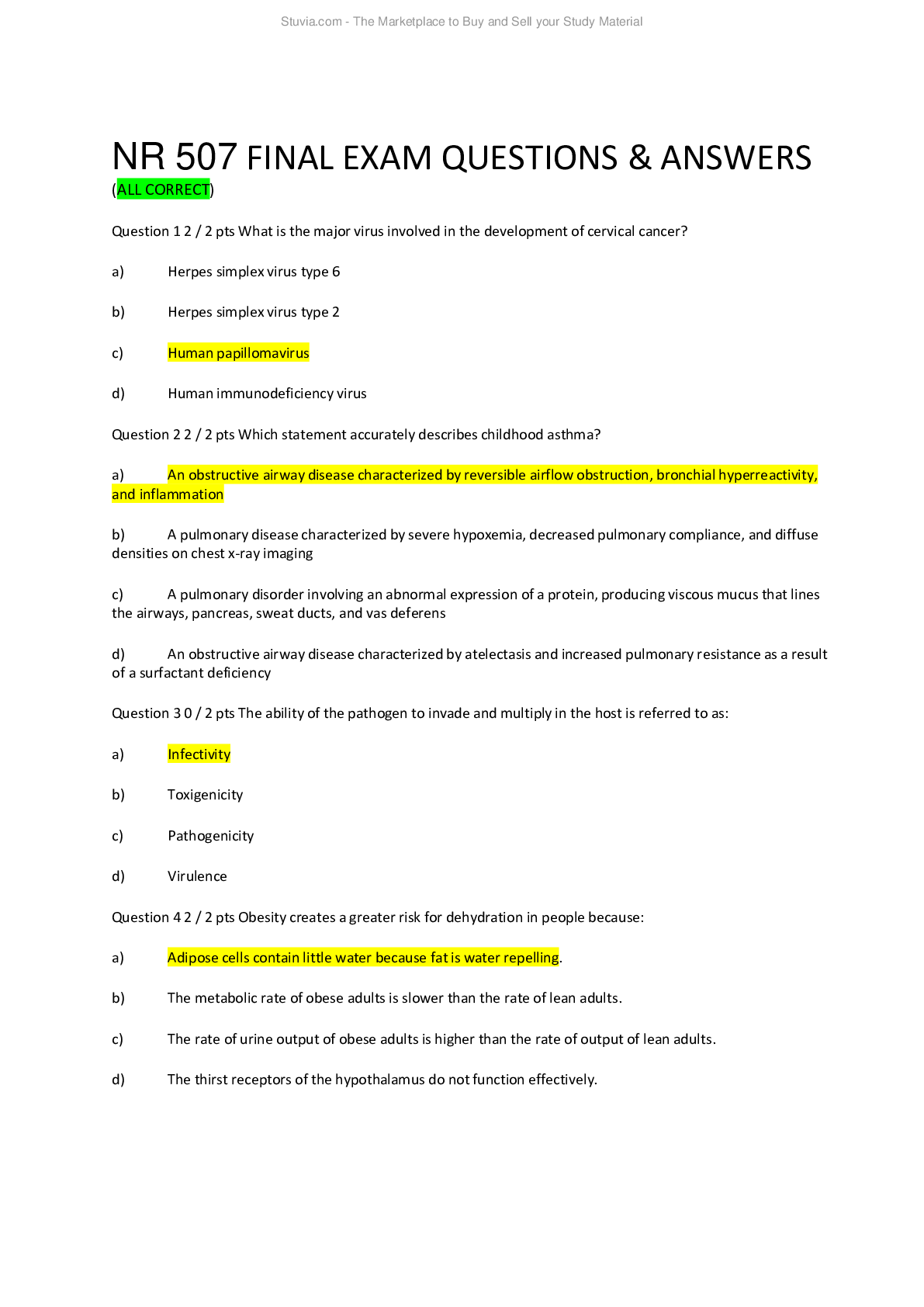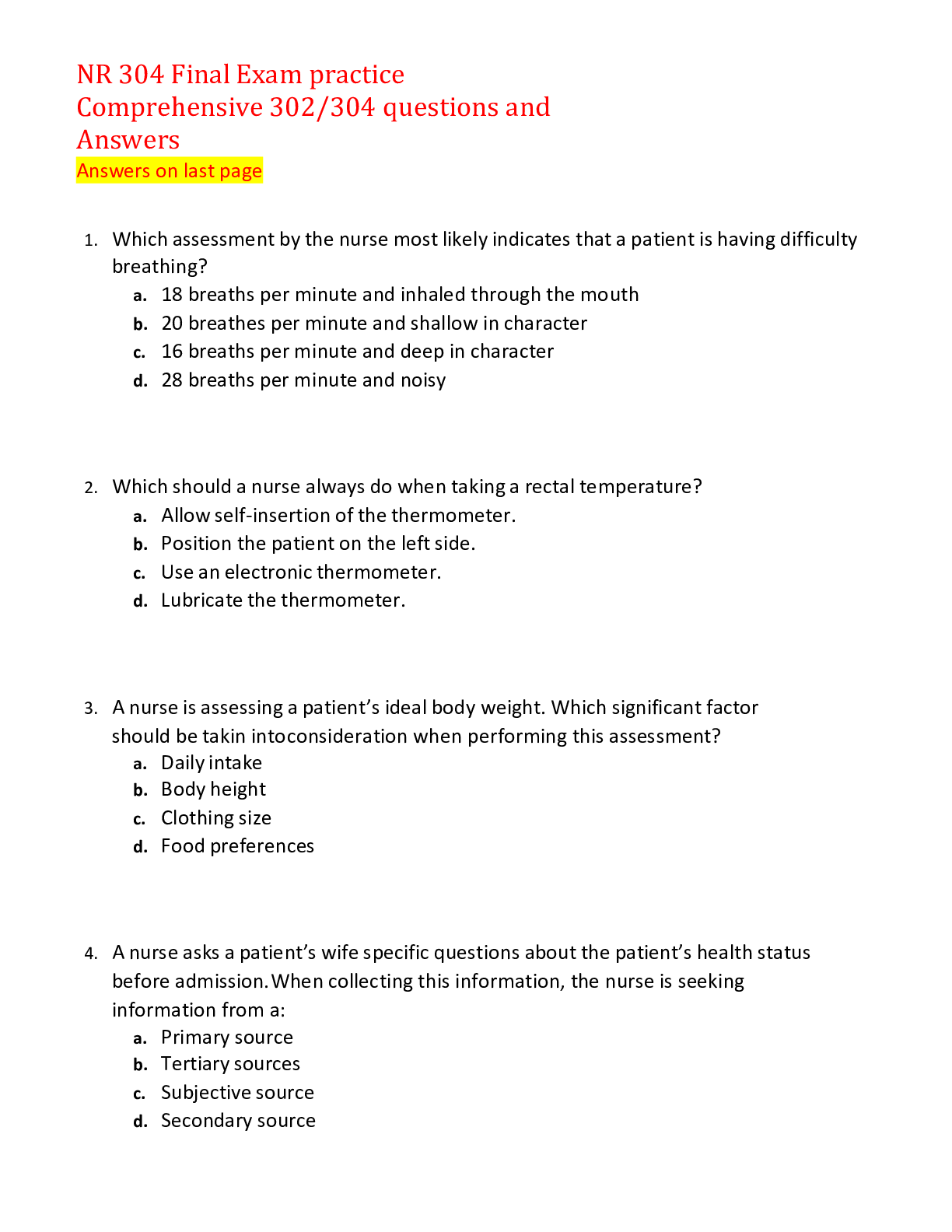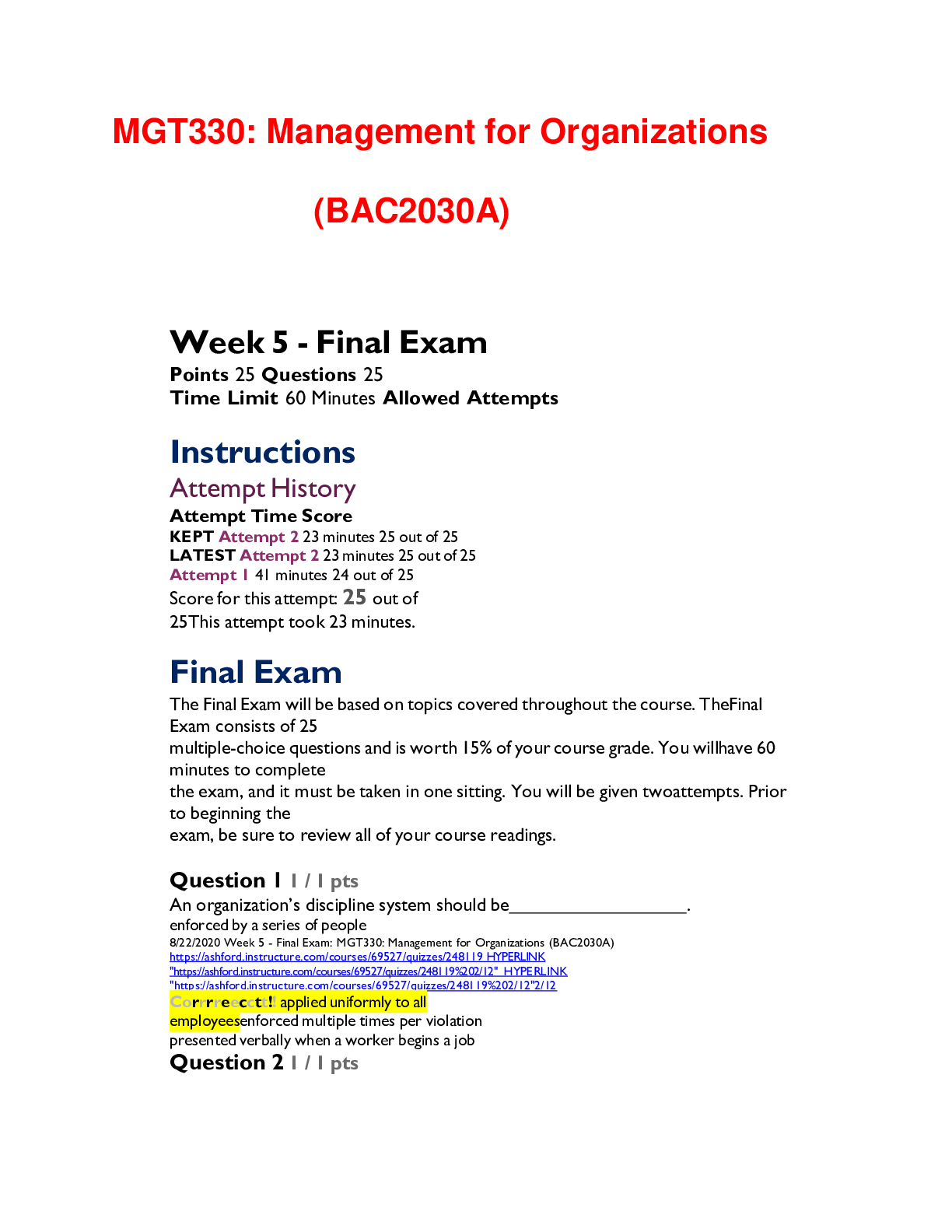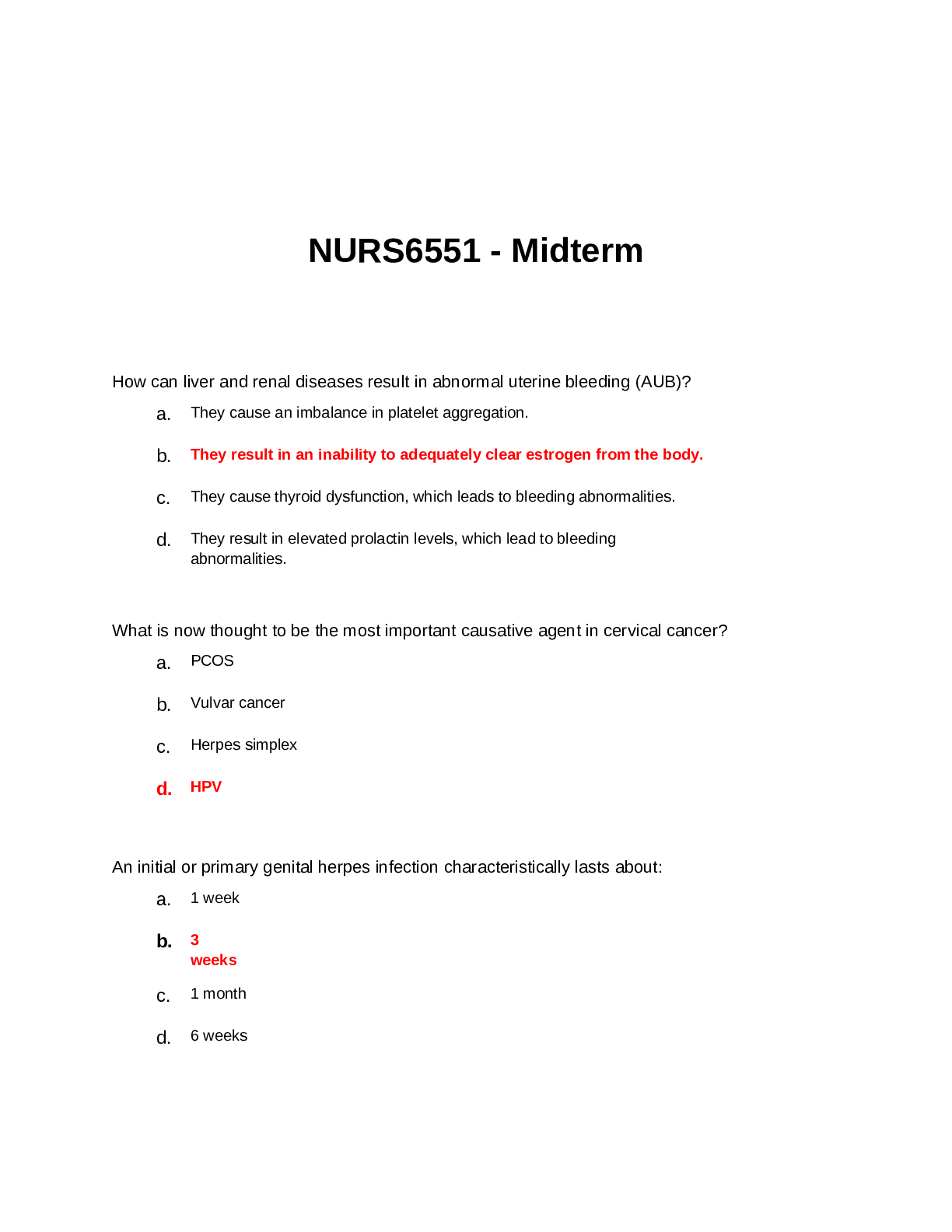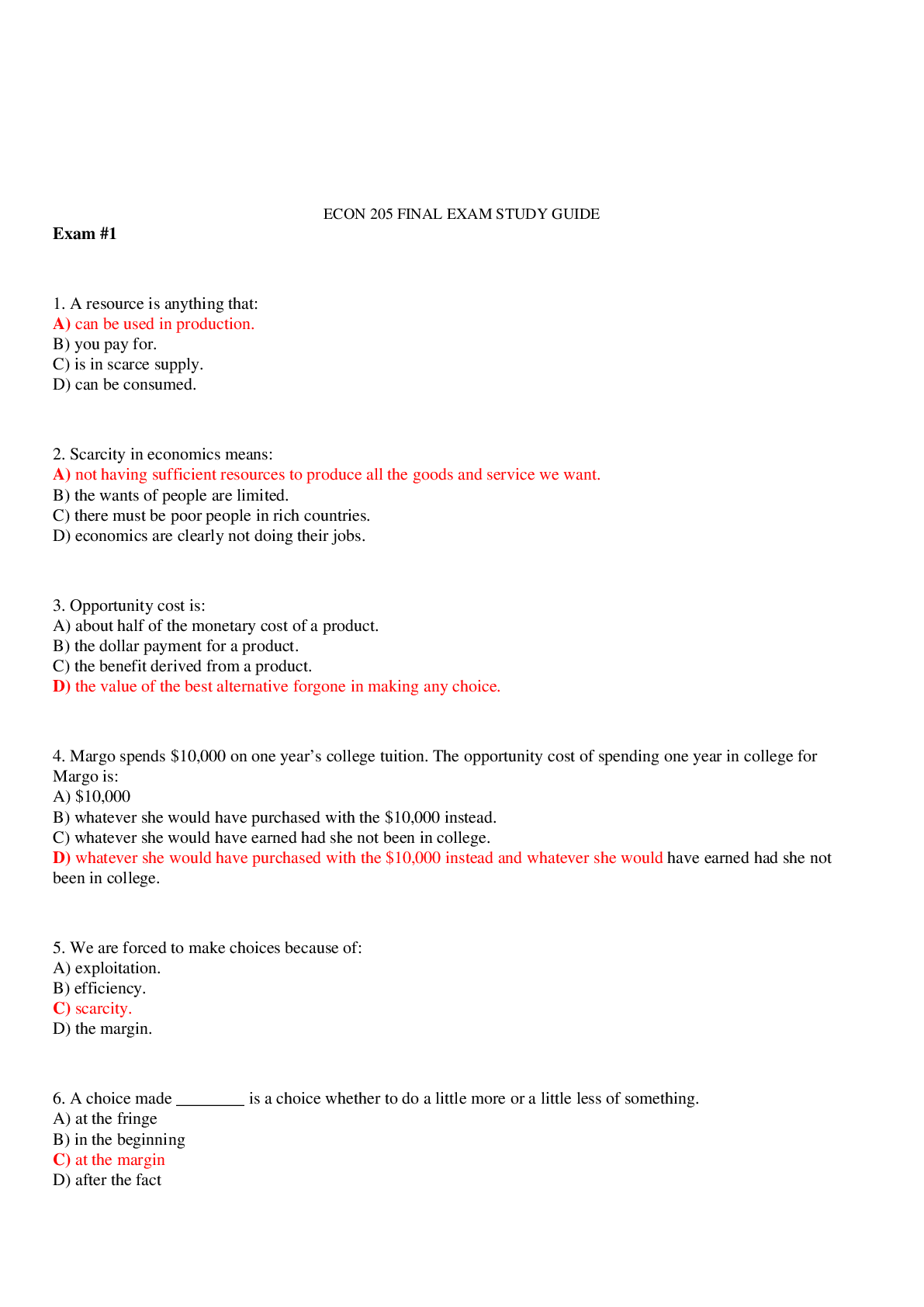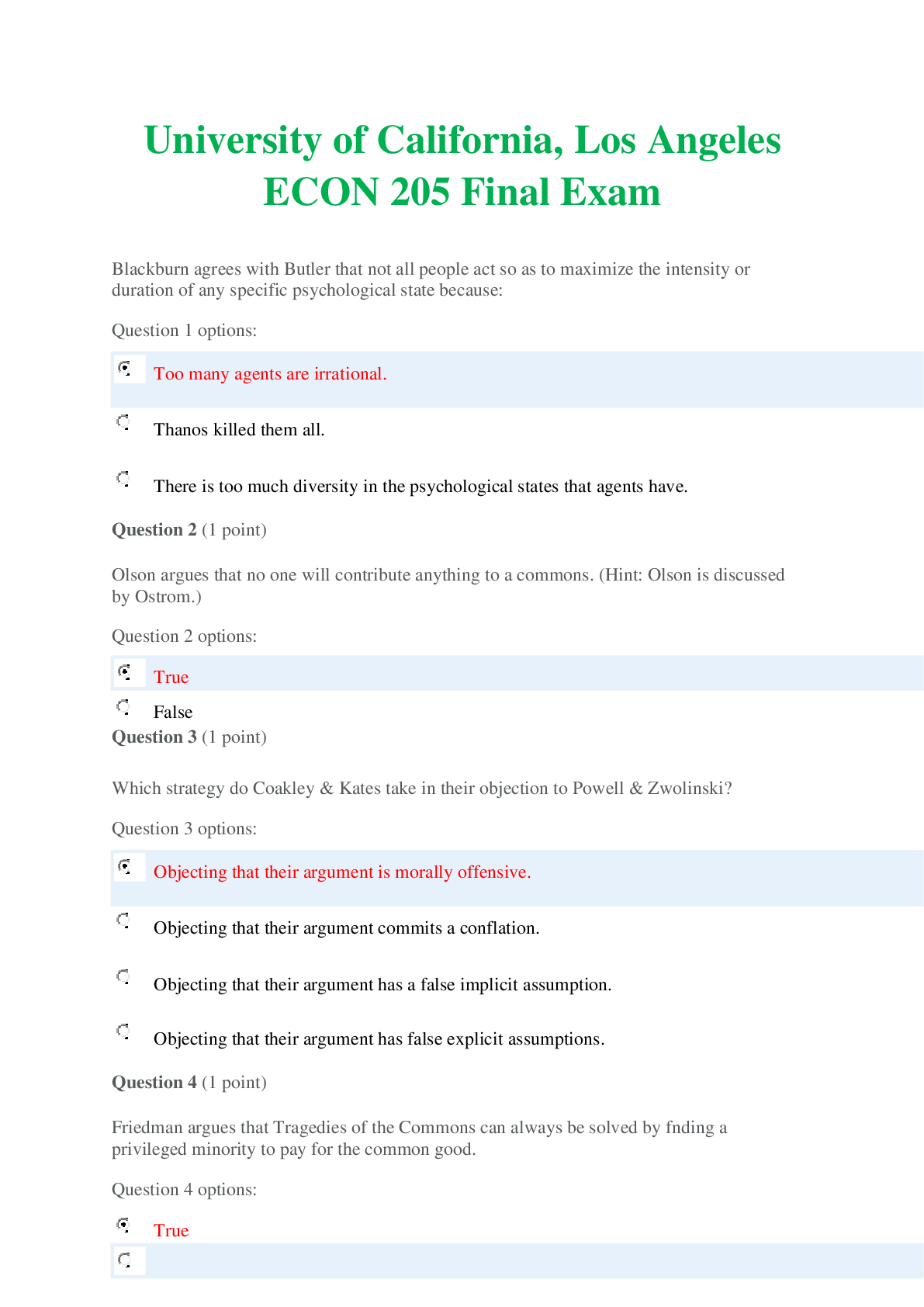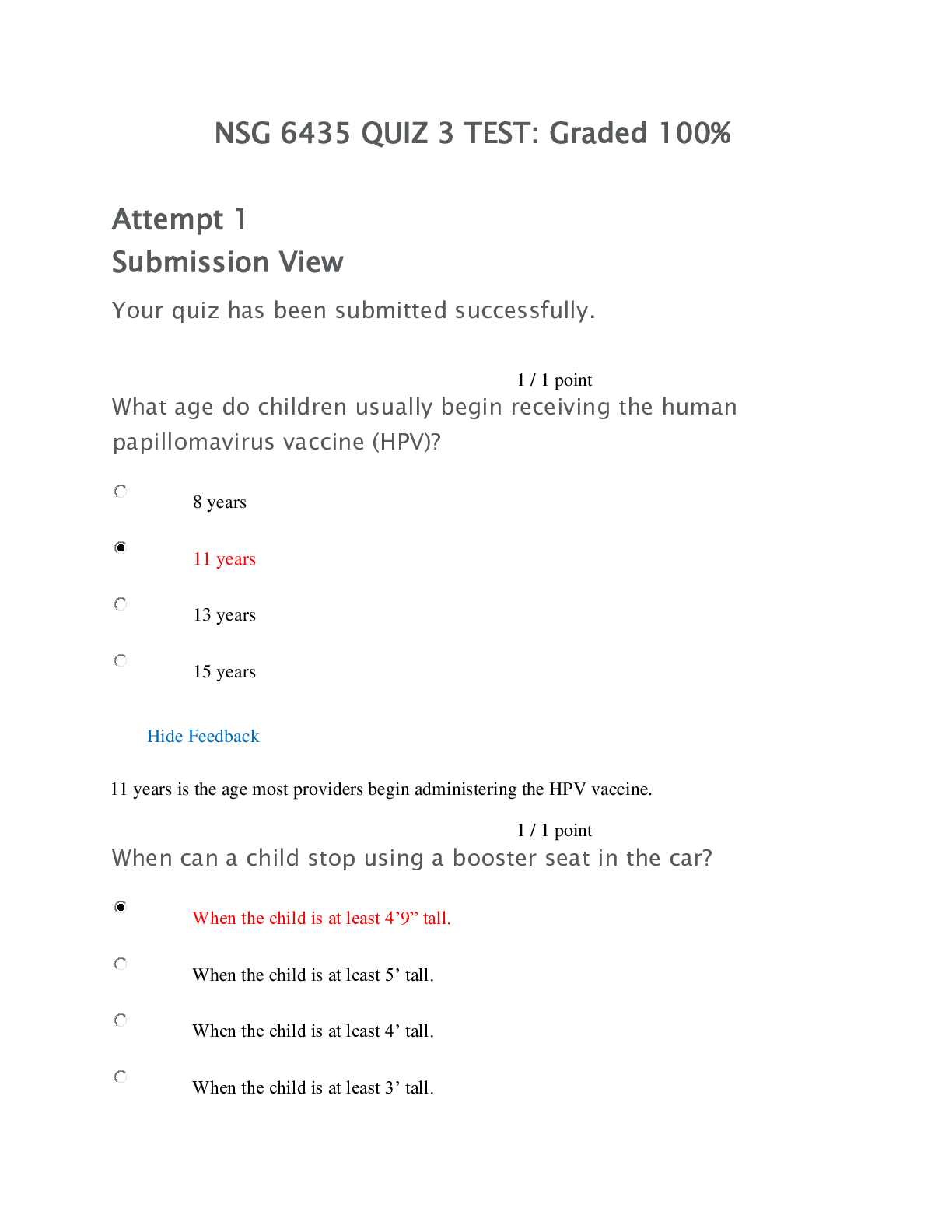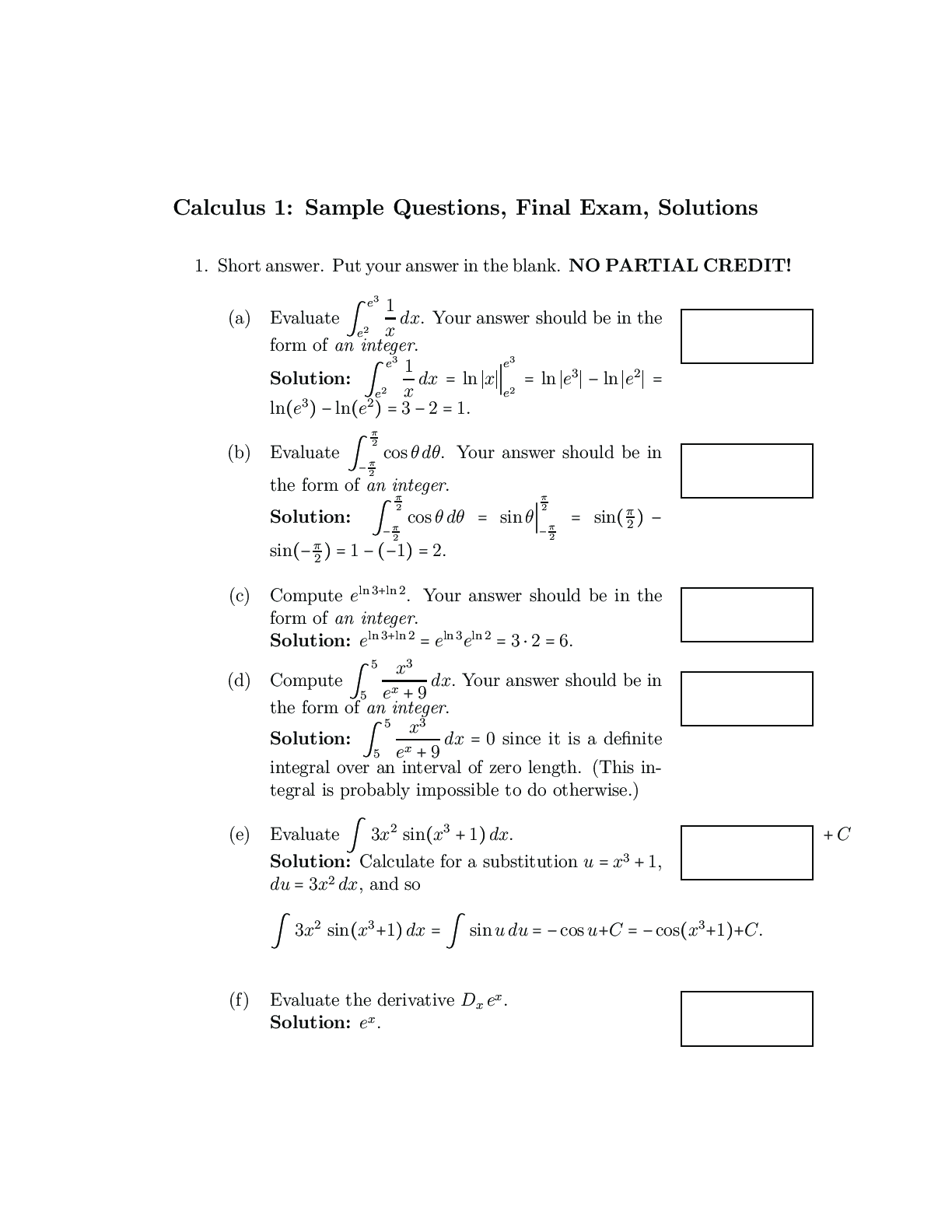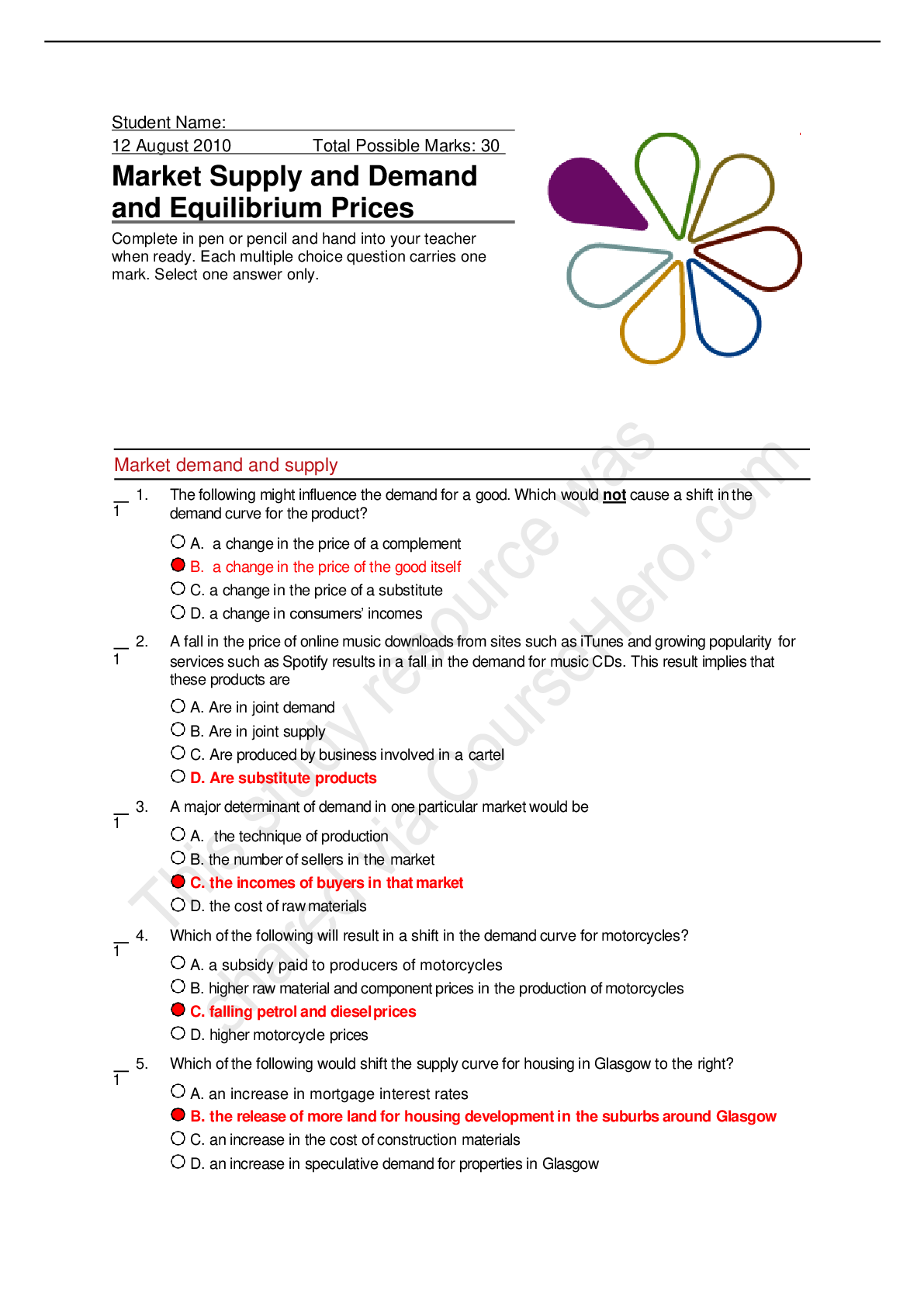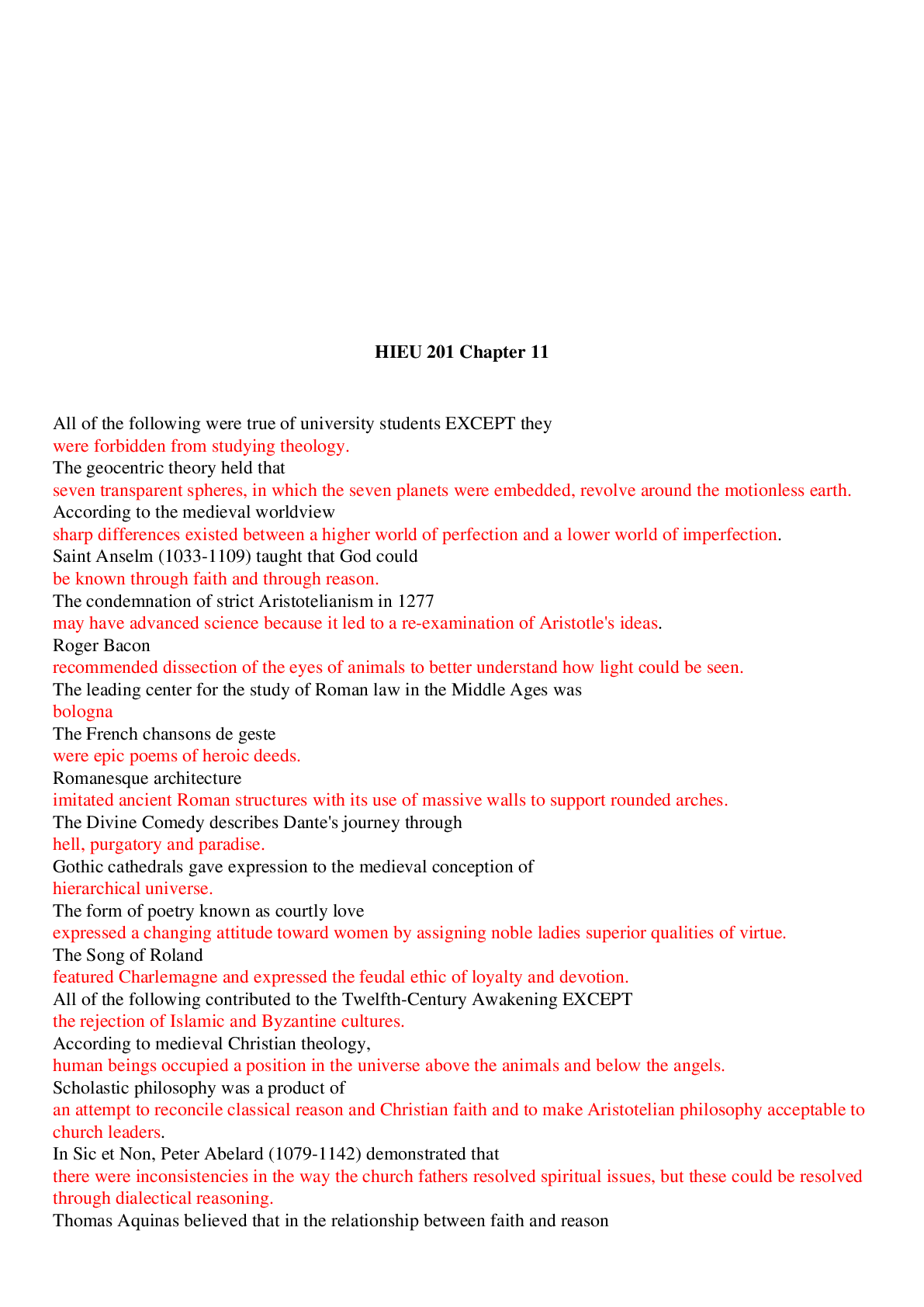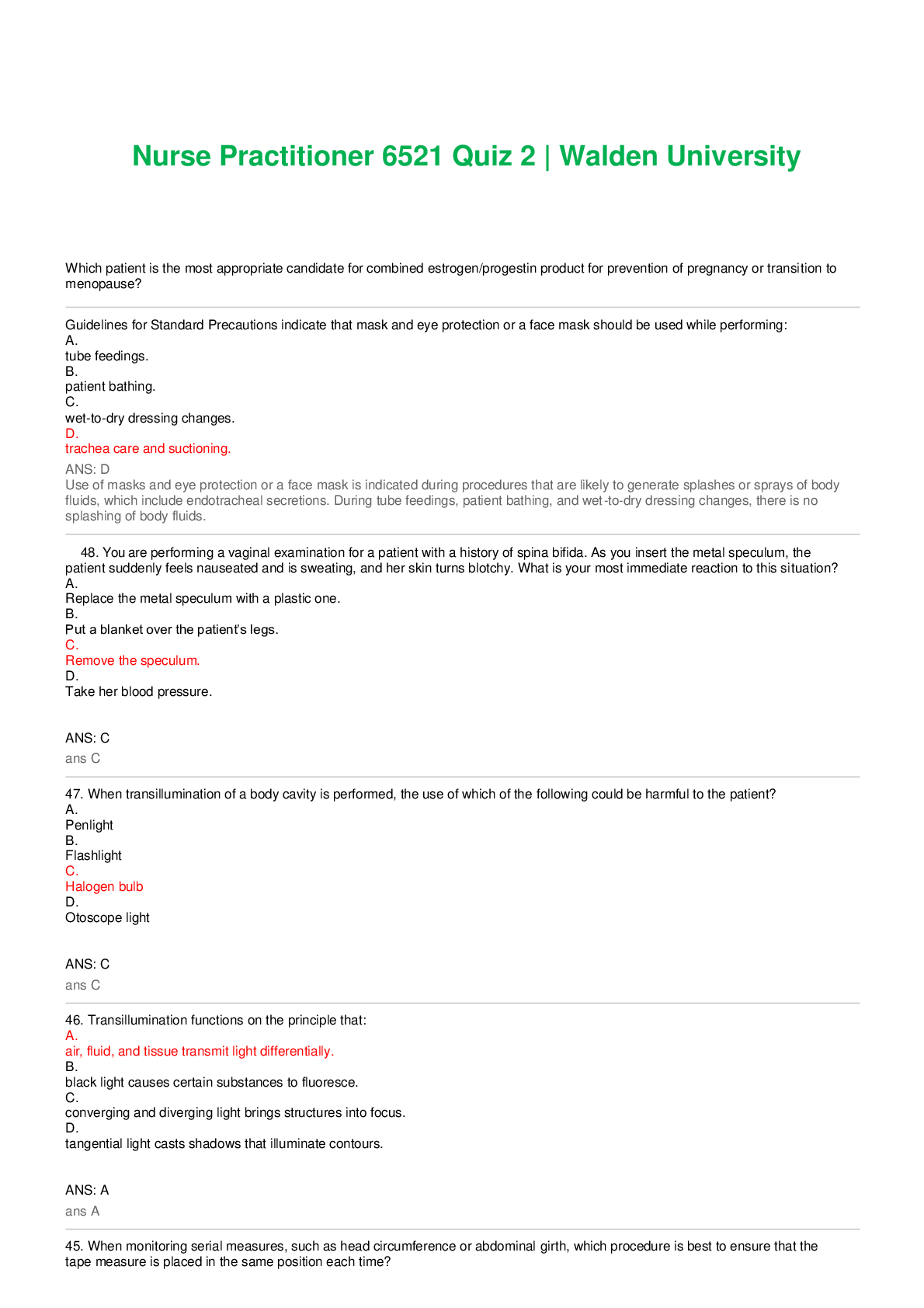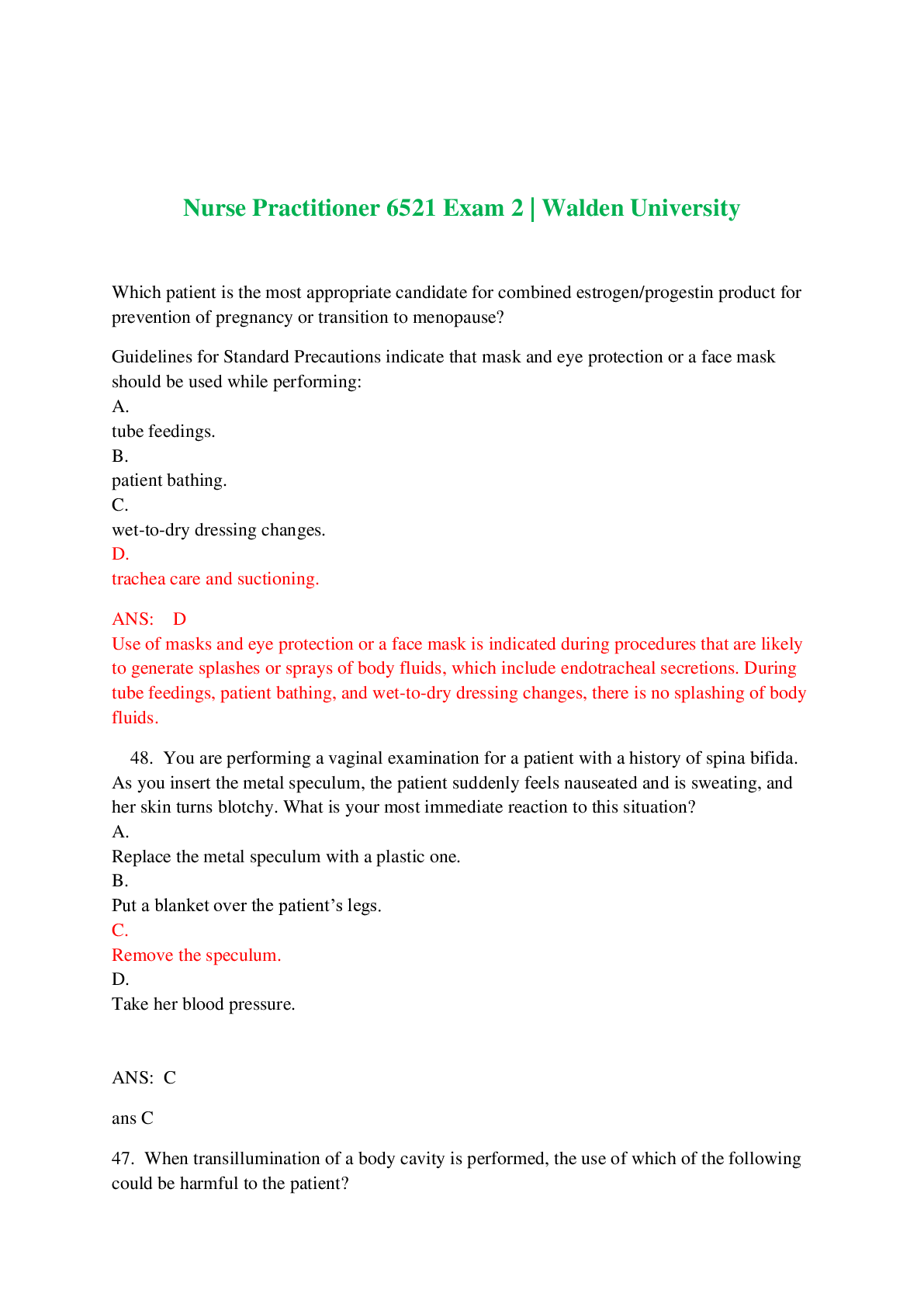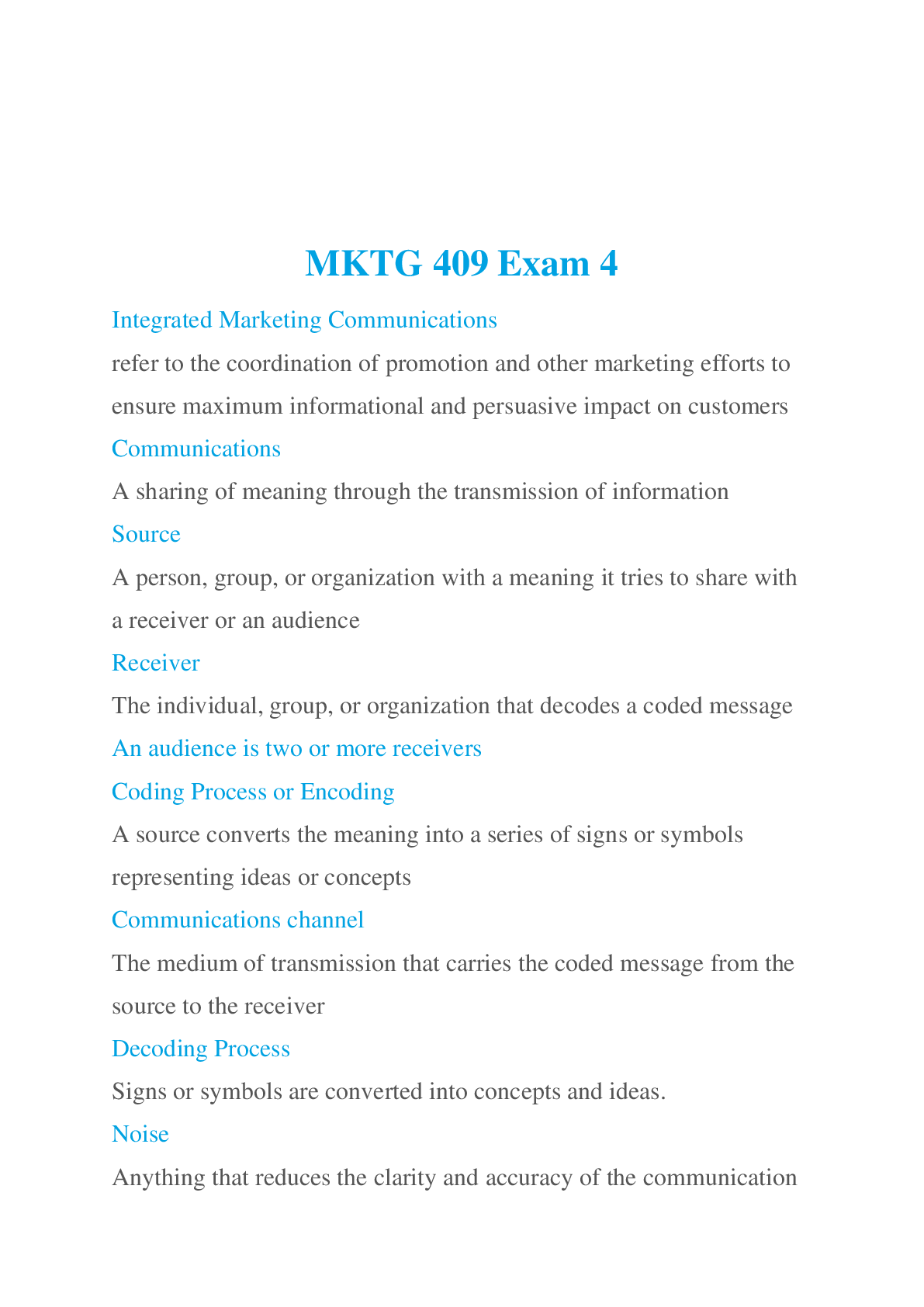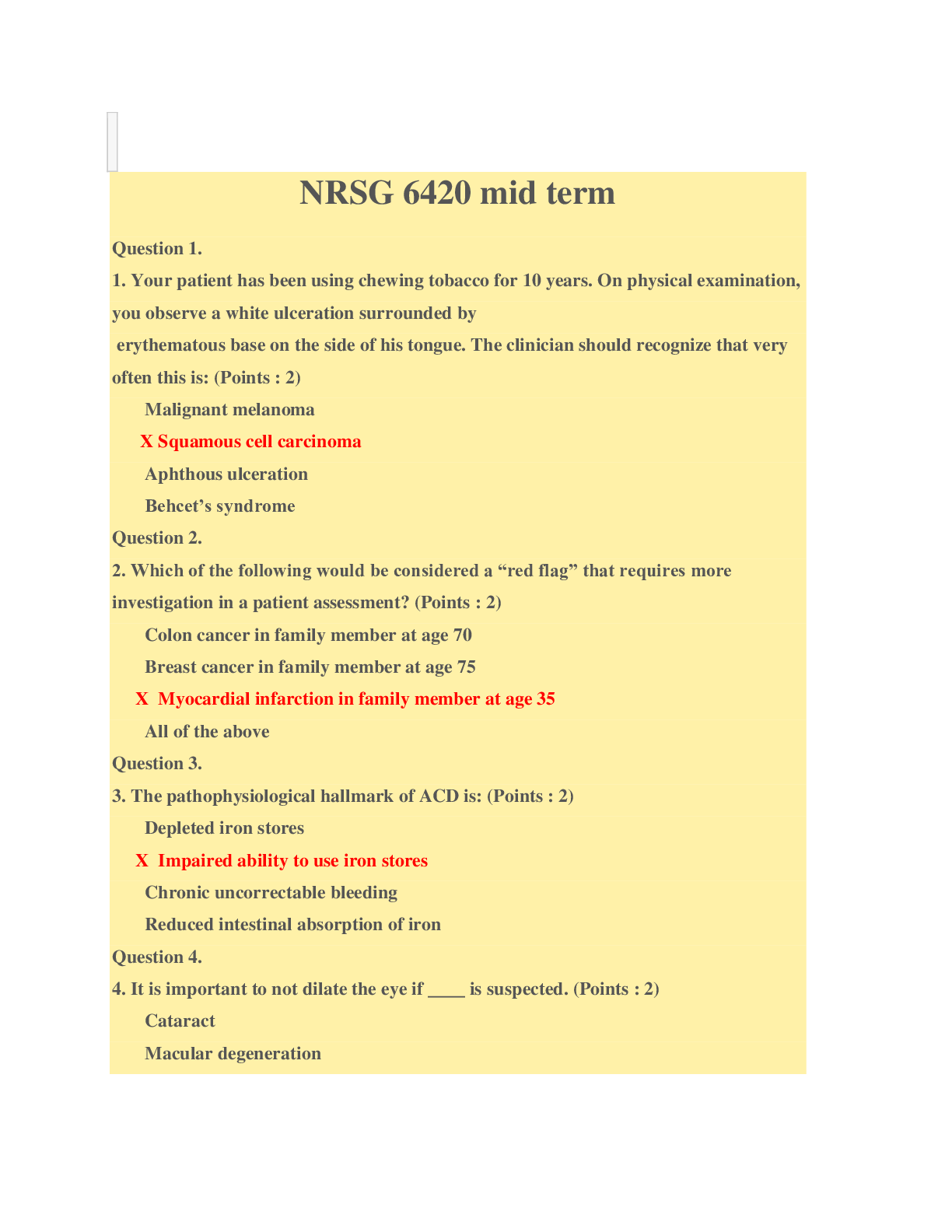Pharmacology > EXAM > pharm-midterm-exam-2020-with-complete-solution100-correctgraded-A (All)
pharm-midterm-exam-2020-with-complete-solution100-correctgraded-A
Document Content and Description Below
• A patient who takes daily doses of aspirin is scheduled for surgery next week. The nurse should advise the patient to: • continue to use aspirin as scheduled. • reduce the aspirin dosage by... half until after surgery. c. stop using aspirin immediately. d. stop using aspirin 3 days before surgery. C Aspirin must be withdrawn at least 1 week before surgery. Aspirin cannot be continued as scheduled, because the risk for bleeding is too great. An interval of 3 days is not long enough for the bleeding effects of aspirin to be reversed. Cutting the dose in half would not reduce the effects of bleeding associated with aspirin use. • A patient who takes aspirin for rheumatoid arthritis is admitted to the hospital complaining of headache and ringing in the ears. The plasma salicylate level is 300 mcg/mL, and the urine pH is 6.0. What will the nurse do? • Increase the aspirin dose to treat the patient's headache. • Notify the provider of possible renal toxicity. • Prepare to provide respiratory support, because the patient shows signs of overdose. d. Withhold the aspirin until the patient's symptoms have subsided. D This patient shows signs of salicylism, which occurs when ASA levels climb just slightly above the therapeutic level. Salicylism is characterized by tinnitus, sweating, headache, and dizziness. Tinnitus is an indication that the maximum acceptable dose has been achieved. Toxicity occurs at a salicylate level of 400 mcg/mL or higher. ASA should be withheld until the symptoms subside and then should be resumed at a lower dose. Increasing the dose would only increase the risk of toxicity. Signs of renal impairment include oliguria and weight gain, which are not present in this patient. This patient has salicylism, not salicylate toxicity, so respiratory support measures are not indicated. • A pregnant patient asks the nurse if she can take antihistamines for seasonal allergies during her pregnancy. What will the nurse tell the patient? • Antihistamines should be avoided unless absolutely necessary. • Second-generation antihistamines are safer than first-generation antihistamines. • Antihistamines should not be taken during pregnancy but may be taken when breast-feeding. • The margin of safety for antihistamines is clearly understood for pregnant patients. A Antihistamines are pregnancy Category C, with debate currently occurring regarding degree of effects on the fetus. They should be avoided unless absolutely necessary. All antihistamines have adverse effects on the fetus. Antihistamines can be excreted in breast milk. The margin of safety of antihistamines in pregnancy is not clear, so these agents should be avoided unless a clear benefit of treatment outweighs any risks • A 5-year-old child with seasonal allergies has been taking 2.5 mL of cetirizine [Zyrtec] syrup once daily. The parents tell the nurse that the child does not like the syrup, and they do not think that the drug is effective. The nurse will suggest they discuss which drug with their child's healthcare provider? • Cetirizine [Zyrtec] 5-mg chewable tablet once daily • Loratadine [Claritin] 10-mg chewable tablet once daily • Fexofenadine [Allegra] syrup 5 mL twice daily • Desloratadine [Clarinex] 5-mg rapid-disintegrating tablet once daily A The child is receiving a low dose of cetirizine and can receive up to 5 mg per day in either a single dose or two divided doses. Cetirizine is available in a chewable tablet, which this child may tolerate better, so the parents should be encouraged to explore this option with their provider. The loratadine 10-mg chewable tablet is approved for children 6 years and older. Fexofenadine would be safe for this child, but it is unlikely that the syrup would be any better than the cetirizine syrup. Desloratadine is not approved for children under the age of 12 years. • A 1-year-old child is scheduled to receive the MMR vaccine, pneumococcal vaccine (PCV), Varivax, and hepatitis A vaccine. The child's parents request that the MMR vaccine not be given, saying that, even though there is no demonstrated link with autism, they are still concerned about toxic levels of mercury in the vaccine. Which response by the nurse is correct? • "Most U.S.-made vaccines have zero to low amounts of mercury." • "Other vaccine preparations contain mercury as well." • "Thimerosal is a nontoxic form of mercury." • "You can get more mercury from breast milk and many foods on the market." A Because of concerns about mercury levels, most U.S.-made vaccines contain either zero or very low amounts of mercury. Some multidose vials of flu vaccine still contain thimerosal, but even that is a very low amount. Telling parents that other vaccines contain mercury will increase their suspicion about vaccines and further reduce their trust. Thimerosal is a mercury-based preservative and thus has the same toxicity as mercury. Although it is true that mercury is found in breast milk and other foods, telling parents this belittles their concerns about the vaccines. • A patient with moderate to severe chronic pain has been taking oxycodone [OxyContin] 60 mg every 6 hours PRN for several months and tells the nurse that the medication is not as effective as before. The patient asks if something stronger can be taken. The nurse will contact the provider to discuss: a. administering a combination opioid analgesic/acetaminophen preparation. b. changing the medication to a continued-release preparation. c. confronting the patient about drug-seeking behaviors. d. withdrawing the medication, because physical dependence has occurred. B Oxycodone is useful for moderate to severe pain, and a continued-release preparation may give more continuous relief. Dosing is every 12 hours, not PRN. A combination product is not recommended with increasing pain, because the nonopioid portion of the medication cannot be increased indefinitely. This patient does not demonstrate drug-seeking behaviors. Physical dependence is not an indication for withdrawing an [Show More]
Last updated: 2 years ago
Preview 1 out of 38 pages

Buy this document to get the full access instantly
Instant Download Access after purchase
Buy NowInstant download
We Accept:

Reviews( 0 )
$11.00
Can't find what you want? Try our AI powered Search
Document information
Connected school, study & course
About the document
Uploaded On
Apr 03, 2021
Number of pages
38
Written in
Additional information
This document has been written for:
Uploaded
Apr 03, 2021
Downloads
0
Views
68

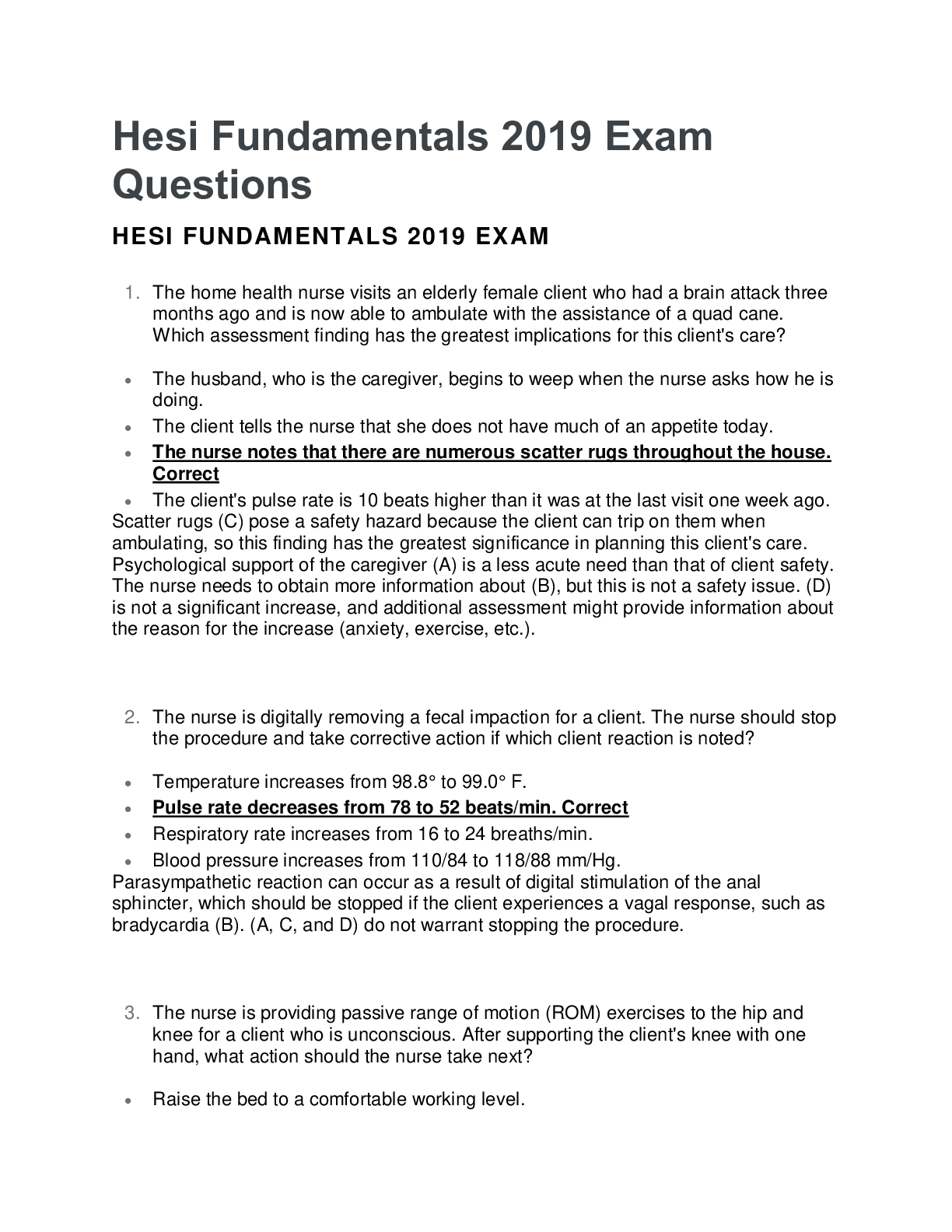
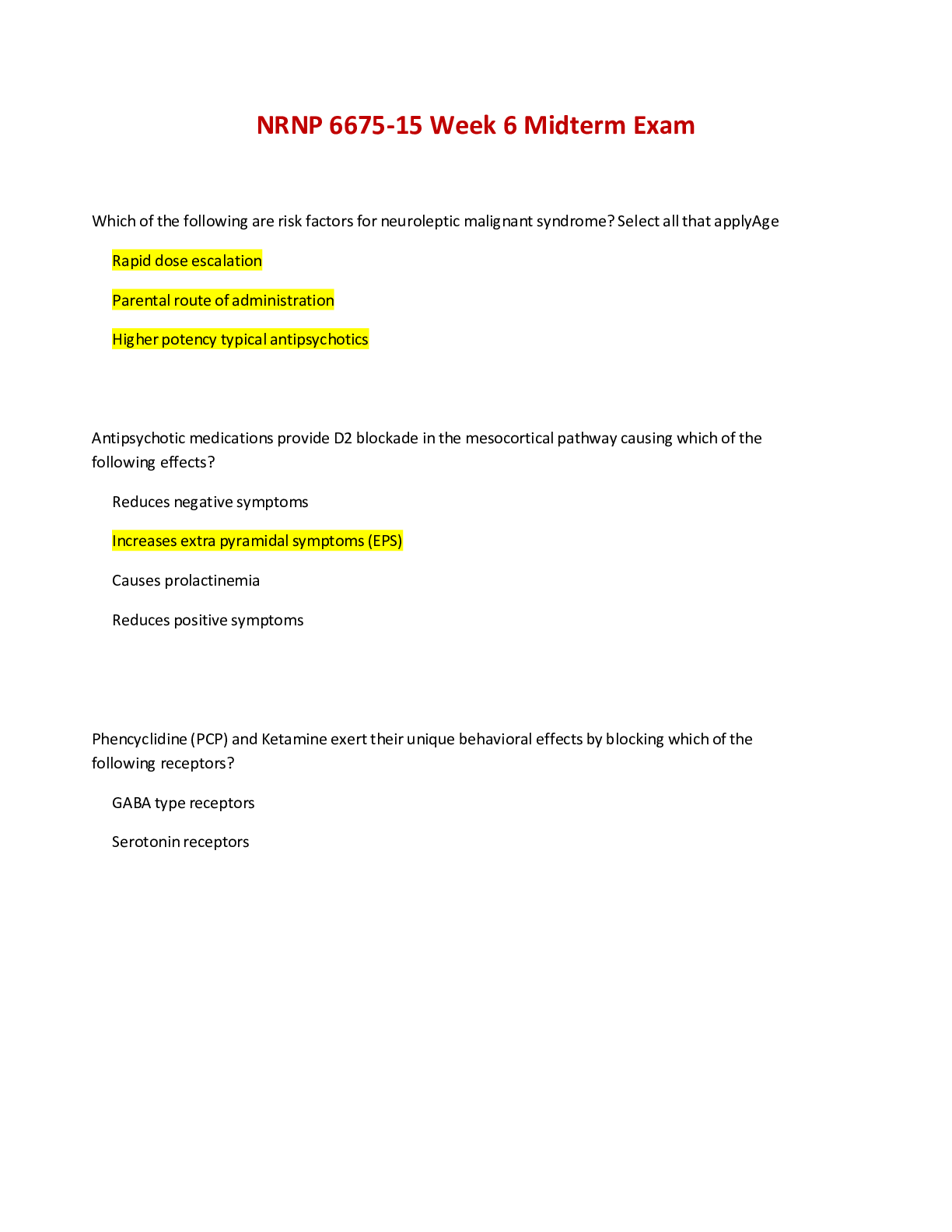
.png)
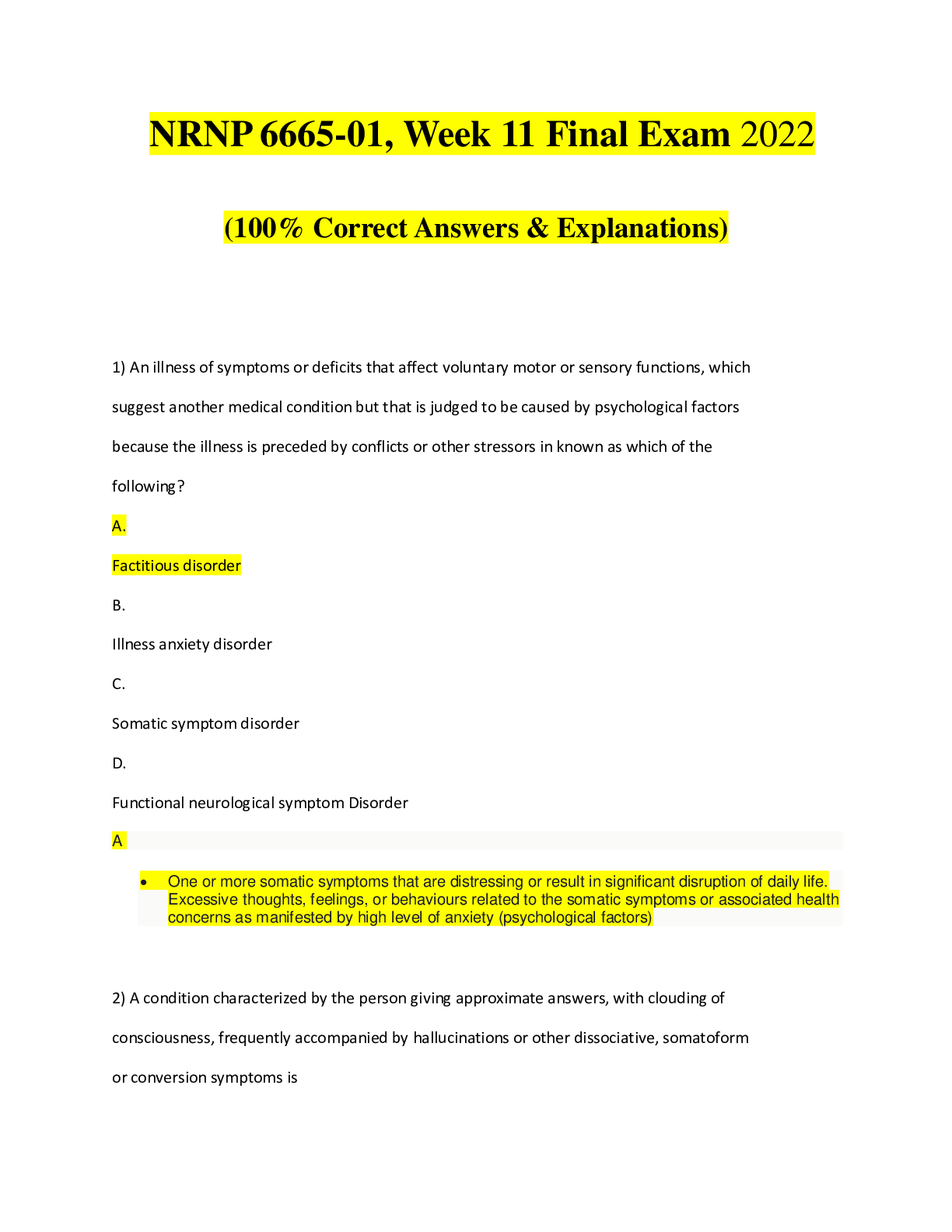
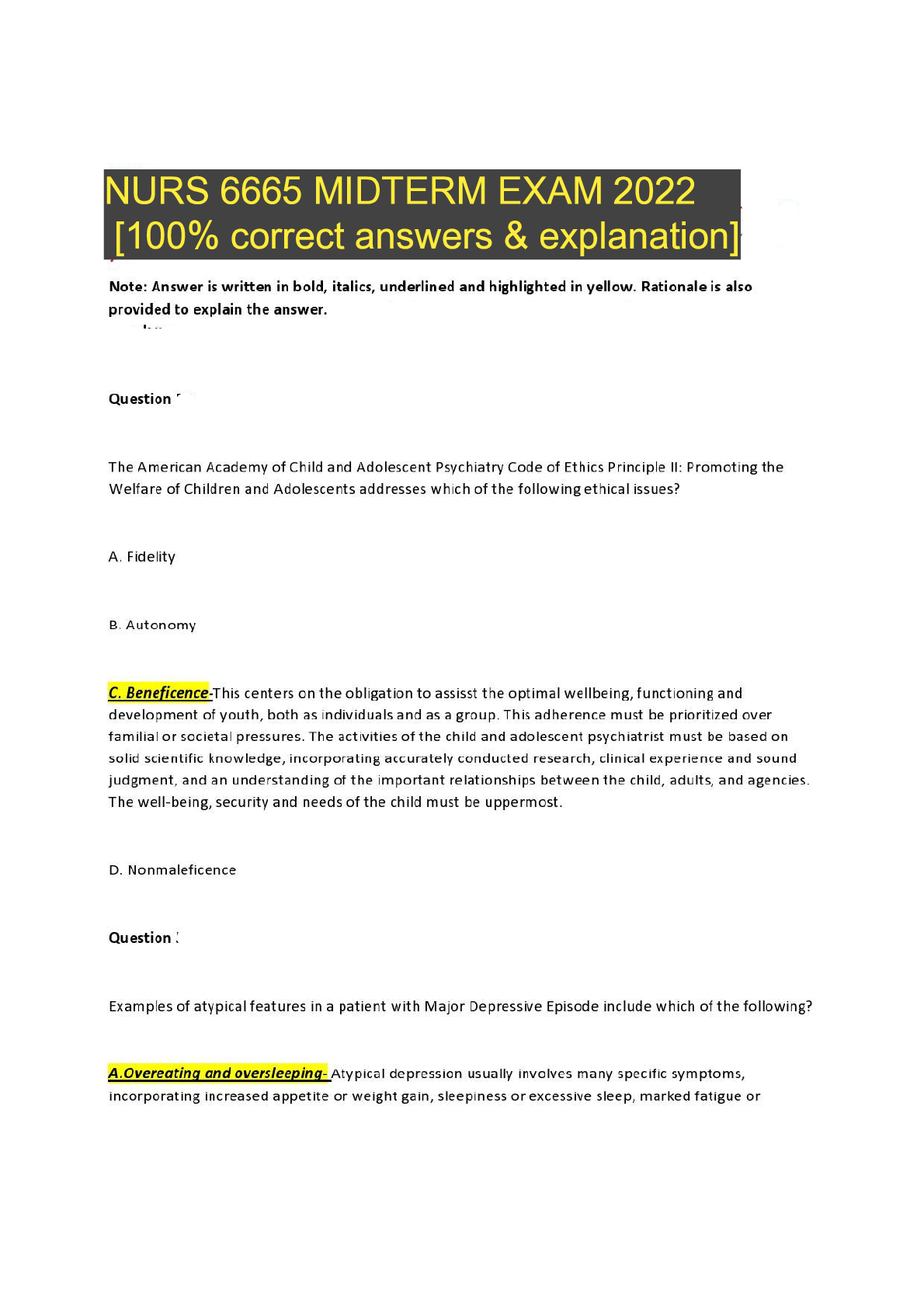
.png)
_removed.png)
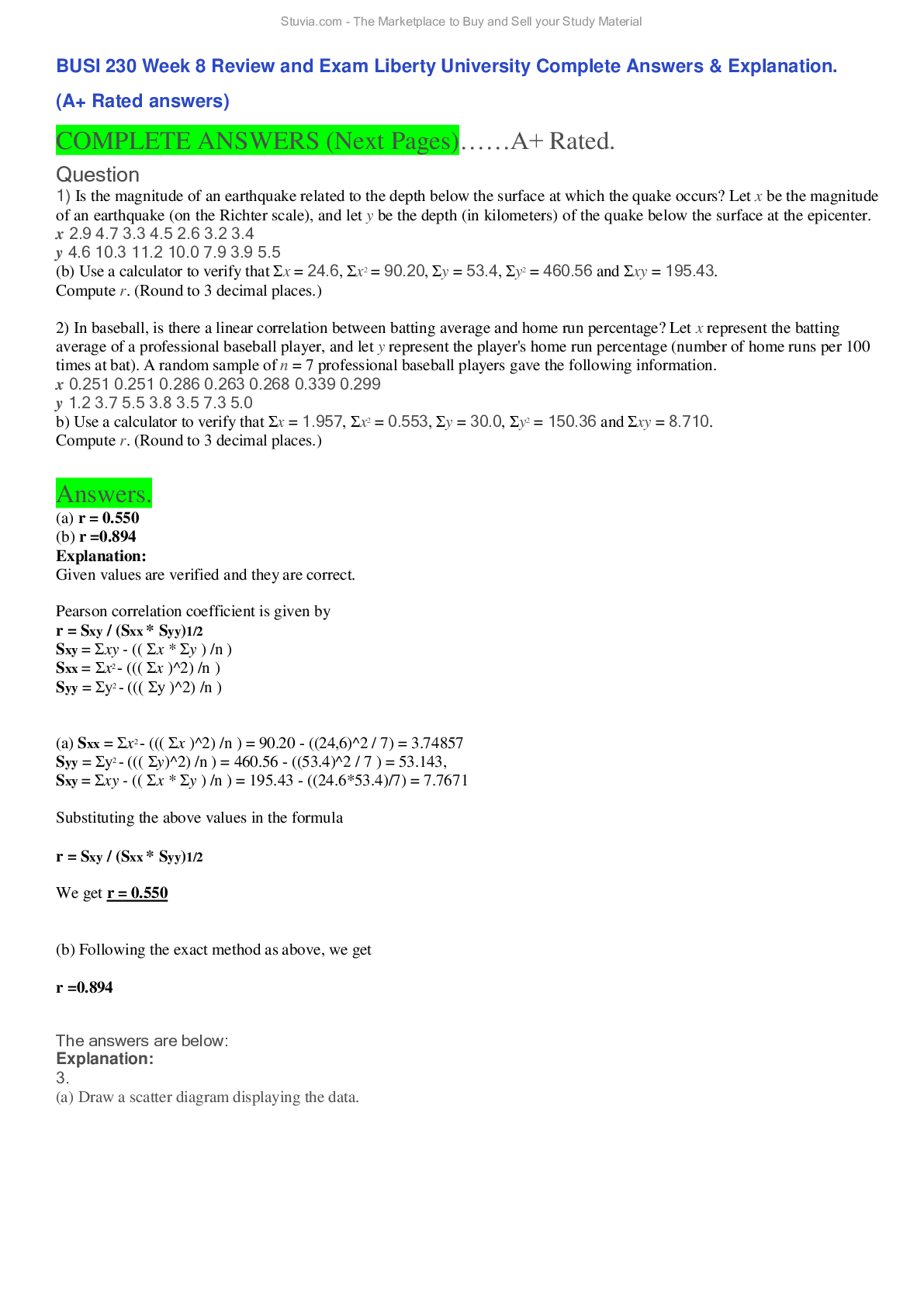
 (1)_removed.png)
